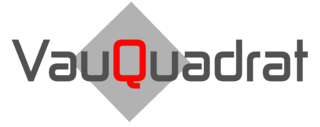Applications
It’s not about “induction”, but about the apparent incompatibility of depth of effect and field concentration. Because everyone thinks they can do induction! With our family flagship, the VauQuadrat V4, you have plenty of power and the basis for all our special inductors, as well as the prerequisite for automation. A 32A socket is sufficient to supply the deep induction inverter and integrated refrigeration machine. The graphic display with glove-compatible encoder ensures intuitive operation.
With the TimeMasterExpert and the “master process instruction”, you have ideal conditions for defining highly reproducible heating processes, which are also used on fine-grain steels and even tempered and armored steels every day in real applications. For preheating, but also for thermal straightening. Because cold straightening is definitely not the gentlest way!
Important for our technology: No uncontrollable surface temperatures.
There are enough applications in industry and workshops. In most cases, a flame has been used up to now. The disadvantages:
- Unintentional damage to the surroundings
- Temperature on the surface must be very high to achieve the desired effect at depth
- Flame attacks the surface and damages it
- Heating takes too long
The new V-series depth induction units from VauQuadrat are a compact alternative suitable for industrial and workshop use at a reasonable price.
When comparing seemingly similar products, pay attention not only to performance, but above all to
- The effective and penetration depth (‘primary heating’) naturally also depends on the operating frequency, the lower the frequency, the deeper the effect. However, with the 15.8 kHz of the VauQuadrat V4, you should only have a primary effective depth of a few tenths of a millimeter!
The fact that this is not the case can be seen in every live demonstration within a few seconds.
In reality, however, the effective depth is only a means to an end. The most important thing is to keep the surface temperature under control. When temperatures of over 1000°C are advertised, it should be clear to everyone that professional work is hardly possible. In any case, beware of higher-frequency devices and resonance induction devices where the frequency is readjusted up to 30 kHz or even higher: During the demonstration, you can immediately see it glow “much more impressively” with sometimes less power, but the depth effect is missing there and the material is probably already permanently damaged! - Although fixed-frequency technology is the necessary prerequisite for effective depth, it is only the combination of the right inductor shape and the necessary application know-how that turns it into Vauquadrat “depth induction”
- Active cooling. Devices without a liquid-cooled inductor tip are not suitable for more than occasional use.
If you use a deep induction unit with the standard inductor provided for this purpose on chromium-nickel steel or even on aluminum/copper, you quickly realize that although this works somehow in principle, long-term stable operation is not possible.
Two important findings have shown us a way out since 2015:
– Inductor geometries that only work on steel with special capacitors work on non-ferrous metals without any problems.
non-ferrous metals without any problems and with high efficiency
